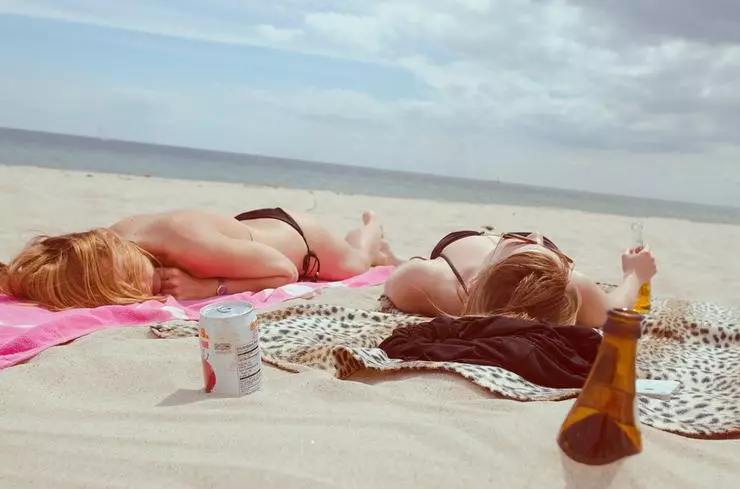Cosmetologists constantly emphasize that the skin needs to protect against harmful solar radiation. Moreover, it is necessary to protect it with a qualitative means that has several filters and covers the rays of different spectrum. Do not neglect such a leaving agent even in the spring - now the sun is active enough so that you can get a burn. We tell about what cosmetics special chemical filters should be added.
What are the rays?
Before talking about cosmetics, you need to understand how the light radiation needs to be protected. Total happens three types of rays:
- UVA is rays with a long wave, which make up 95% of solar radiation. The main danger to the skin is premature aging. They penetrate the deep layers of the skin and destroy the cells from the inside, causing a tan. They are especially dangerous for dry skin, which is so lacking moisture. The rest of the skin types with competent leaving this type of radiation is not terrible.
- UVB is rays with an average wavelength, which make up almost 5% of radiation. They are the reason for the appearance of burns, pigmentation and irritation on the skin. Their peak action falls at the lunchtime - no vain doctors advise not to sunbathe from 10 to 16 hours. This type of radiation is dangerous for children, late-skinned adults, people prone to pigmentation, and amateurs of acidic peels and grinding.
- UVC is rays with a short wave make up hundredths of percent. They practically do not penetrate through the atmosphere, therefore are not dangerous for a person.

Need to protect the skin from both Speckers
Photo: Pixabay.com.
Ingredients protecting from ultraviolet
Conditionally UV filters are divided into physical and chemical. Physical include:
- Zinc Oxide (Zinc Oxide) - protects against both types of radiation But chooses the skin and can cause a feeling of dryness. Ideal for children and ceiling adults.
- Titanium dioxide (titanium dioxide) - protects from UVB rays, but the UVA copes badly. Also elects and can score pores. Suitable for people who rarely burn in the sun.
Chemical filters:
- Avobenzone - absorbs UVA, but does not protect against UVB radiation. It suits people who sunbathe well and quickly acquire a smooth dark shade of the skin.
- Tinosorb - protects against both types of radiation . Suitable for all people, including children and ceiling adults.
- OCTOCRYLENE - absorbs UVB, but does not protect from UVA.
- Oxybenzon, or benzophenone (oxybenzone) - protects only from UVA radiation.
- Octinoxate (OctInoxate) - protects only from UVB radiation.
- Ethylhexyl triazone is active only from UVB.

Pay attention to the staff
Photo: Pixabay.com.
What to pay attention to the selection of the means
- Label. It should indicate the degree of protection: 2-4 - protection from 50-75% rays, 4-10 - protection from 80%, 10-20 - protection from 95%, 20-30 - Protection from 97%, 30-50 - Protection from 99% of the rays. The protection factor from UVA radiation is indicated by a special icon in a circle on the front side of the packaging. Remember that the thinner the layer, the less protection - about 2 mm of cream will be ideal for blocking light.
- Phototype. The lighter your skin, hair and eyes, the more you are more exposed to radiation. Flood-skinned people must use the Sun protection, and renew it at least once every 2 hours - during this time you sweat, bathe, touch the skin, so the layer is gradually removed.
- Price. A good tool cannot cost cheaply. Always pay attention to the composition before buying a cream or spray. Promises of the manufacturer about waterproof and perseverance will not matter when you lie in the shadows instead of bathing because recently burned down.
